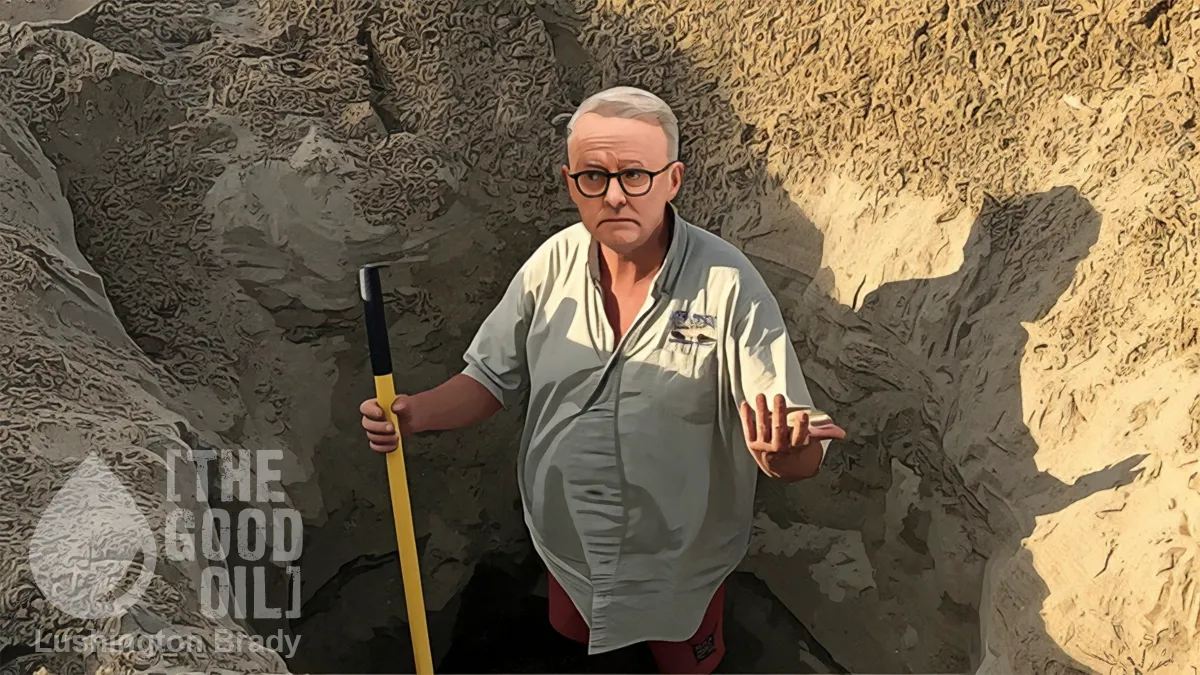Table of Contents
Braggadocious types are often said to be ‘overcompensating’: that is, trying too hard to correct a problem of which they are too-acutely aware. Narcissism is a classic symptom of overcompensating.
Cultures are as prone as individuals to overcompensating. Consider, for example, the curious phenomenon of “Afrocentrism”. Also known as “Wewuzzery”, Afrocentrism attempts to overcompensate for the backwardness of much of (sub-Saharan, especially) Africa by too-obviously falsely laying claim to the greatness of other civilisations. ‘We wuz’ Egyptians, or Vikings or Greeks and so on.
A local variant of cultural overcompensation is the endless parroting of the ‘world’s oldest living culture’.
Leaving aside the question of what, exactly, is to be celebrated about a literal Stone Age culture (if the claim were true), there is the obvious fact that it’s arrant nonsense, no matter which way we cut it.
If it’s simply a claim of unbroken habitation, then clearly there’s the surviving ancient African cultures such as the Khoisan. Genetically, the Haplogroup L peoples, stretching from East Africa, across Arabia, the Levant and to southern Europe, with its strongest surviving populations in India, date back an astonishing 230,000 years.
It doesn’t get any better if the argument that the current culture is a surviving descendant of an ancient one. In that sense, Aboriginal culture is no more ancient or modern than any other. All cultures are survivors of their ancestors.
In fact, Aboriginal culture is recent – as is every other known culture today.
The first thing is to define what culture even means.
Anthropologists have identified some 164 definitions of “culture”, but these can be distilled to three key factors that define culture: the language, beliefs and customs of a group.
Some anthropologists argue that language is the single most important condition of culture. “Complex human culture could not exist without language, and language could not exist without culture.”
Linguistically, then, there was no monolithic ‘Aboriginal culture’ prior to European settlement – as might be gleaned from the fact that Aborigines had no collective term for themselves. Instead, there were hundreds of different language groups, often mutually unintelligible. Within two centuries, most of those Aboriginal languages had ceased to be living languages. More than 90 per cent of Aborigines speak only English. Only two per cent do not speak English at all. Kriol – an admixture of English and surviving Aboriginal words – is the single most spoken ‘indigenous’ language.
What about beliefs? A majority of Aborigines today are Christians, often devoutly so. Over a third have no religious beliefs. Less than one per cent report adherence to traditional beliefs.
The third pillar is custom. Almost no Aboriginal Australian alive today lives a fully traditional lifestyle. Least of all in diet or dress.
Food, like language, is an intrinsic part of a culture. Just ask the French, Italians, Chinese – and many other peoples – how important food is to their identity. The food eaten by pre-1788 Australians comprised native animals and plants taken from the land. Today, the food that provides the main Aboriginal diet is the same as that for all other people in Australia.
The fad for ‘bush foods’ is just that – a fad, a luxury indulgence. As is the fad for pasty, pudgy city-dwellers to smear on a bit of ochre and a red nappy for the dreary, interminable “Welcome to Country” nonsense (another entirely modern invention).
Clothing is fundamental to culture and we recognise some of those cultures – past and present – when we see people wearing turbans, burqas, tartan kilts, wooden clogs, togas, djellabas, cheongsams, saris, kimonos and sombreros. The T-shirts, jeans and shorts worn by so many Australian people today, including Aborigines, didn’t exist in 1788 and were rare around the world until the 1950s. Most clothes in 2023 are visibly identifiable as belonging to our time and are international, in contrast to previous times when most clothing was identified with a region. This cultural change has affected the whole world.
Of course, the grievance-left will insist that this is all a deplorable outcome of colonisation. Well, so what? It doesn’t change that Aboriginal culture has fundamentally changed since 1788. But, even before 1788, Aboriginal culture was never a static monolith.
It was only in the last 10,000 years that Aborigines perforce stopped hunting giant marsupials, from wombats the size of hippos to kangaroos as tall as small giraffes, simply because they had driven them extinct.
Then there were the massive changes to native ecosystems, long before Europeans arrived – such changes would necessarily substantially alter “the culture of any people who are spiritually attached to the land on which they live”.
Then there were the massive changes to native ecosystems, long before Europeans arrived: such changes would necessarily substantially alter “the culture of any people who are spiritually attached to the land on which they live”.
After their final isolation some 10kya, the Tasmanians developed cultures distinct from the mainland. The appearance of dingoes about 5000 years ago precipitated further cultural change on the mainland. Within the last 500 years, Aboriginal groups in the far north of Australia underwent contact with Asian seafarers, with notable impacts on language, toolkit and even genome.
So, even before Governor Arthur Phillip arrived in Sydney Cove in 1788, Aboriginal societies had undergone enormous changes to their cultures, each one in its own way according to specific, local circumstances.
The distinctive dot art so coveted by art collectors is another ultra-modern invention, dating back to 1971. And flags never existed in Aboriginal cultures until 1970, when Harold Thomas designed the ubiquitous “Aboriginal flag”.
On every aspect of ‘culture’ imaginable, Aboriginal Australian culture is not ‘the oldest continuous culture in the world’, but a very young one, mostly dating back no further than the 1950s.
Which is as it should be. What, after all, would we say about a culture so static and stultified that it stayed in the Stone Age, while the rest of the world reached for the stars?









